How to Remove a Virus From iPhone and iPad in 2025
Your iPhone may have a virus if it feels slow, drains battery fast, or shows pop-ups you didn’t expect. You may also notice unknown apps, settings that changed, or strange behavior you didn’t trigger. It’s frustrating because you expect iPhones to be secure, but even Apple’s strong protection can’t stop every type of online threat.
Most iPhone viruses come from fake links, sketchy apps, or unsafe WiFi. A trusted antivirus app can detect threats and block them before they cause damage. Some can also alert you when your data leaks or if a network isn’t safe. You don’t need to be a tech expert — setup takes just a few minutes.
Quick Guide: How to Remove Malware From iOS Devices
- Get an iOS antivirus app. Download a trusted security app like Norton 360. It checks for harmful apps, fake websites, unsafe WiFi, and other common iOS threats.
- Open the app and scan your iOS device. The app runs a scan of your iPhone or iPad and flags any security risks. It also gives clear steps to fix each issue.
- Enable real-time protection. Turn on background protection to stay safe from future threats. This helps block risky links, fake texts, and unsafe networks.
How to Remove Malware From iPhone and iPad (Complete Guide)
1. Restart Your iPhone
Restarting your iPhone can stop hidden processes that malware may be running in the background. It clears temporary system memory, which can disrupt scripts or glitches tied to malicious code. This won’t remove malware but can halt ongoing damage temporarily. Always start with a reboot before applying deeper fixes.
To restart, press and hold the side button with either volume button, then swipe to power off. Wait at least 10 seconds before turning it back on. This short delay helps flush lingering tasks fully. Once it restarts, observe if issues like pop-ups or lag return.
2. Update iOS
Apple regularly patches security flaws that hackers exploit to infect iPhones. If your iOS is outdated, malware may be taking advantage of an old vulnerability. Running the latest version improves system stability and cuts off most known infection paths. Always install updates as soon as they’re available.
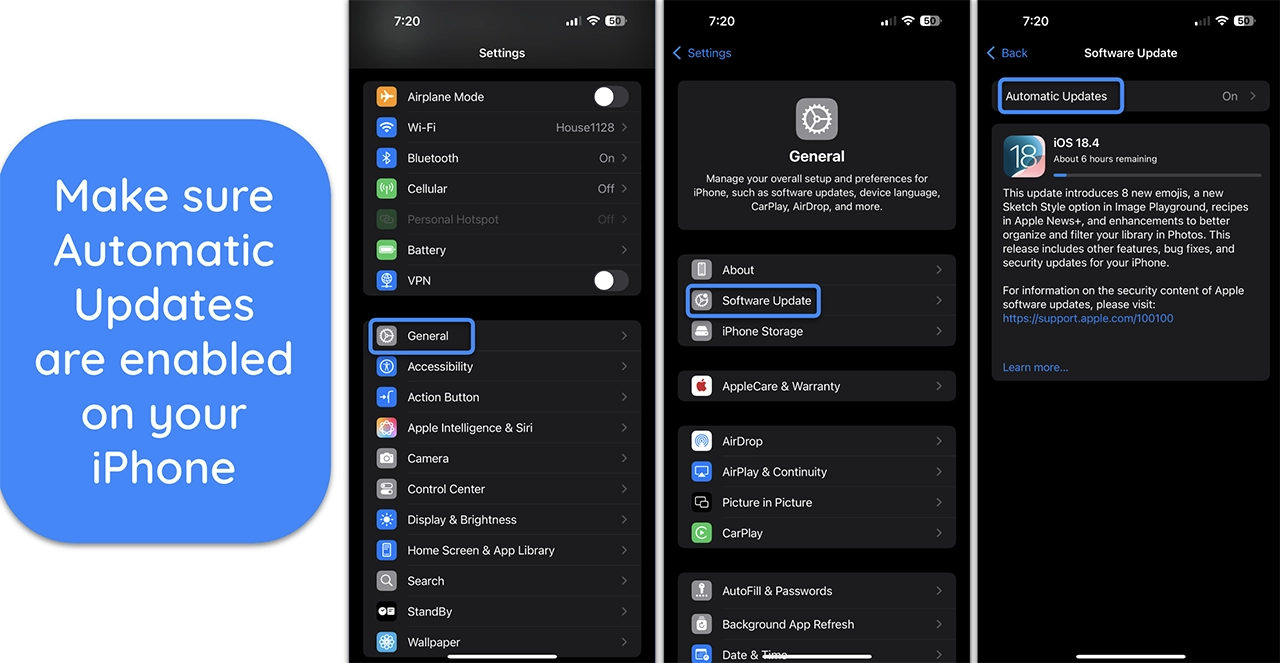
To update, go to Settings, then tap General, and then Software Update. Download and install the latest version listed there. Keep automatic updates on to avoid falling behind. Even one missed update can leave your device exposed to recent threats.
3. Delete Suspicious Apps
Some malware hides inside apps you never installed or no longer recognize. These often have blank icons, strange names, or demand permissions they shouldn’t. Fake VPNs, flashlight apps, or “system cleaner” tools are common malware carriers. Deleting them removes threats and frees up system resources.
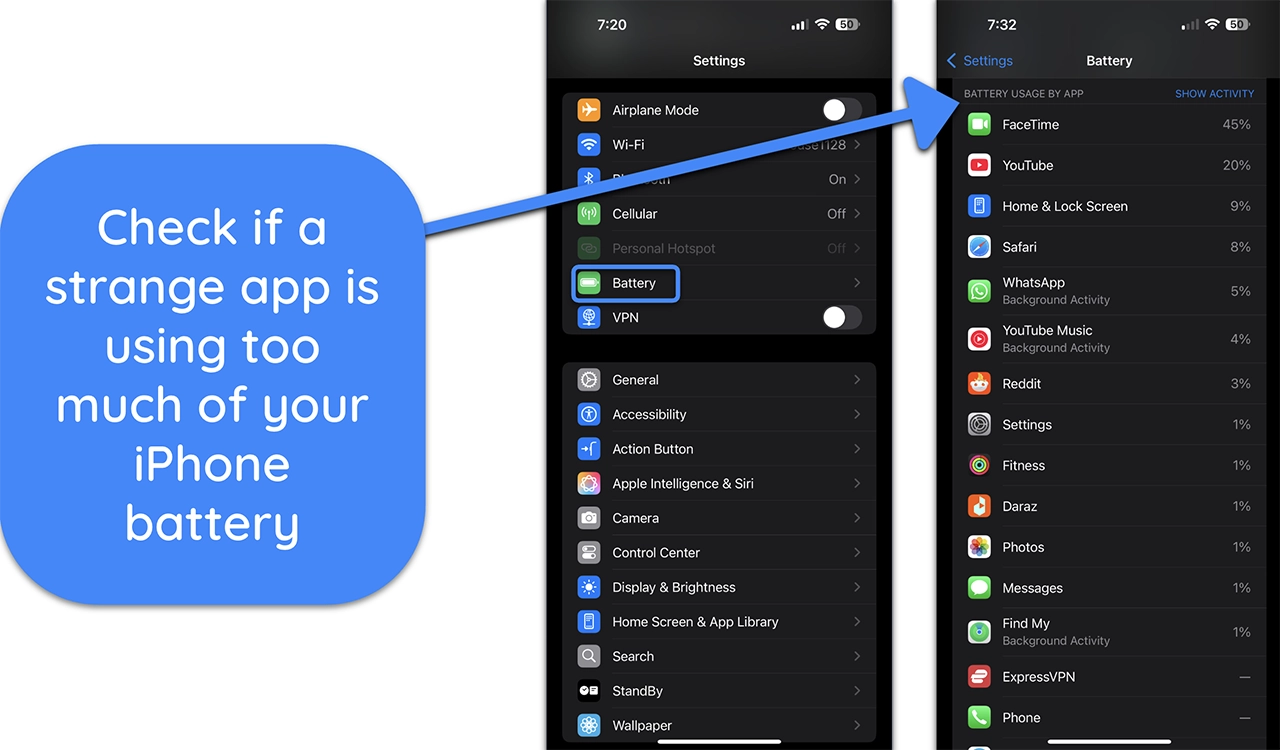
To delete an app, tap and hold its icon, select Remove App, and confirm deletion. If unsure, check your battery usage to find which apps are draining power abnormally. You can also look under iPhone Storage to see recently installed apps sorted by date.
4. Clear Your iPhone Browsing Data
Malicious redirects and pop-ups often come from browser data saved after visiting infected sites. Some sites store small bits of code in your browser cache or cookies, which can keep triggering attacks. Clearing this data breaks the cycle and helps remove browser-based malware. This is especially important if Safari is behaving strangely.
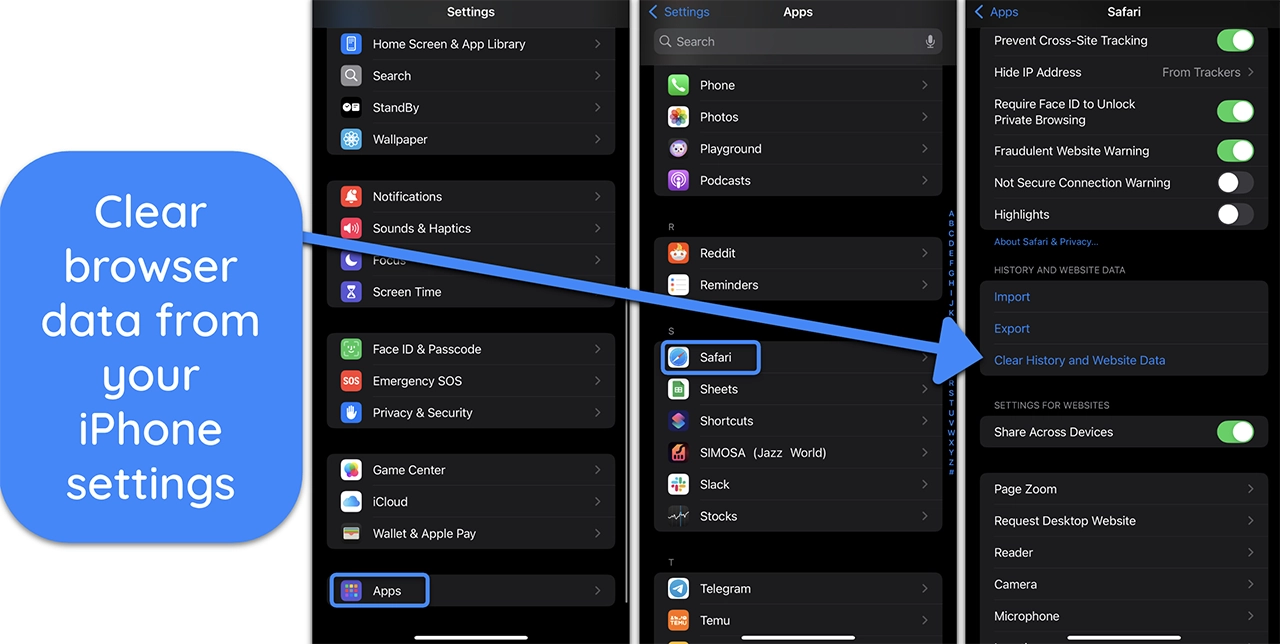
Go to Settings, scroll down and tap Apps, then find and tap Safari on the list. You’ll find an option to clear History and Website Data. If you have other browsers installed, follow the same process for each browser. This removes session cookies, cached files, and other saved elements tied to bad links.
5. Restore iOS From Backup
Restoring a clean backup rolls your iPhone back to a point before the malware appeared. This removes any harmful changes or apps that infected your device. Just make sure to pick a backup from a date when your phone was working fine — not after issues began.
How to restore from iCloud
- Go to Settings, then tap General, and then Transfer or Reset iPhone.
- Tap Erase All Content and Settings and follow the reset prompts.
- During setup, choose Restore from iCloud Backup.
- Sign in and select a backup dated before the infection.
How to restore from PC or older macOS (Finder/iTunes)
- Connect your iPhone to your computer and open Finder (macOS Catalina or later) or iTunes (older macOS or Windows).
- Select your device and click Restore Backup.
- Pick a backup from before the malware appeared, then click Restore.
- Keep the device connected until the process finishes and the device syncs.
6. Factory Reset
Factory reset wipes everything and reinstalls a fresh version of iOS. This is your best option if malware keeps coming back or blocks other fixes. It removes every app, setting, and file, giving your phone a clean slate. Only do this when all else fails.
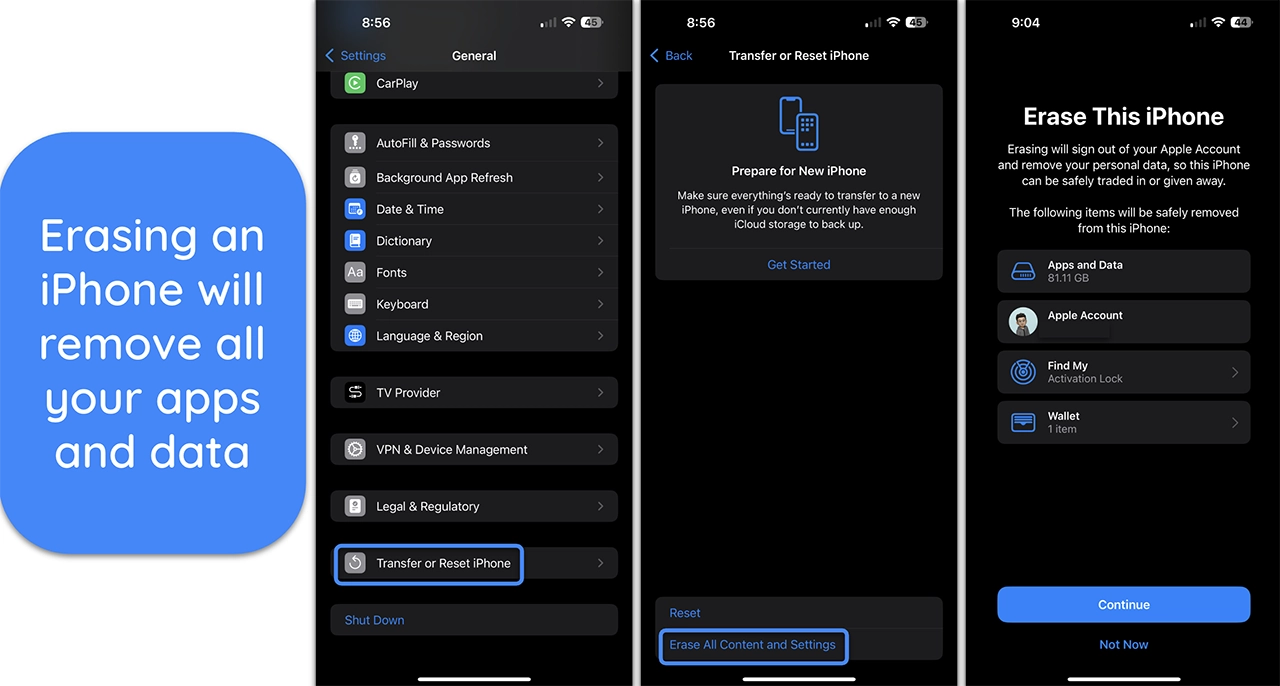
Before resetting, back up any clean files using iCloud or Finder. Then go to Settings, tap General, and then Transfer or Reset iPhone. Select Erase All Content and Settings to begin. After setup, install apps carefully and avoid restoring unnecessary old data.
7. Use a Reliable iOS Antivirus
A good iOS antivirus can find hidden threats you missed and block new ones from getting in. Top apps like Norton 360 scan for fake websites, harmful apps, WiFi risks, and phishing texts. They work in real time and notify you as soon as something dangerous appears.
Install a trusted antivirus from the App Store and enable all available protections. Features like link scanning, breach alerts, and network checks add extra safety. Some apps also include a VPN to secure your connection on public WiFi. Keep the app running in the background for full coverage.
Best Antiviruses to Protect iPhone and iPad
Not all iOS antivirus apps offer the same level of protection. Some focus on data breaches, while others help you clean junk or scan networks. But only a few offer full security that catches threats early and protects you in real time. Based on hands-on testing, Norton 360 has the strongest all-around defense for iPhones and iPads.
| Starting Price | SMS Spam Protection | WiFi Scanning | System Usage | Money-Back Guarantee | |
|---|---|---|---|---|---|
| Norton | ✔ | ✔ | Light | 60 days | |
| TotalAV | $19.00 | ✘ | ✘ | Very light | 30 days |
| McAfee | ✘ | ✔ | Light | 30 days |
1. Norton — Best Overall Antivirus for iOS Security
Norton 360 is the most feature-rich antivirus app for iPhone and iPad. It checks your device for outdated software, missing protections, and risky settings right after installation. In my test, it flagged an old iOS version and prompted me to enable Web Protection. This tool blocks dangerous links before they load in your browser.
It also includes a built-in VPN with a no-logs policy, which secured my connection instantly when I joined a public WiFi at a cafe. Norton blocked a suspicious ad redirect within seconds while I was browsing. It also scanned newly downloaded apps and warned me about one requesting unusual permissions. All operations ran quietly in the background.
Another standout is Norton’s Dark Web Monitoring, which scans for leaked info tied to your email. It found an old password of mine in a breached database and alerted me right away. Combined with real-time protection and identity alerts, Norton offers the most complete iOS security package available.
2. TotalAV — QR Scanner Blocks Dangerous Links Before You Open Them
TotalAV gives your iPhone solid protection with useful tools that go beyond basic scans. The QR Code scanner checks hidden links for phishing risks — it blocked 4 fake websites instantly in my tests. The WebShield also filters out harmful URLs before they load in Safari or Chrome. Together, these features add strong real-time browsing safety on your iOS device.
The Smart Scan looked for both security and performance issues on my phone. It flagged that I had Face ID turned off and pointed out apps using location access I didn’t need. TotalAV also includes a VPN and breach monitoring, though its VPN was a bit slower than Norton’s. Still, the protection coverage felt thorough and well-designed.
With the Photo Manager, I cleared over 1GB of space by deleting 500+ junk photos. The app runs smoothly and doesn’t slow your device while working in the background. While it lacks SMS protection, TotalAV’s WiFi scanner helps you avoid risky open networks at airport lounges or cafes. For its price, it’s a solid second-best option for iPhone safety.
3. McAfee — Identity Monitoring Alerts You to Data Breaches Instantly
McAfee’s iOS app has a big focus on identity monitoring. You can track up to 10 email addresses to check for breaches, which helped me find a leaked password tied to an old account. The app recommended a password change and offered tips to improve my security score. These alerts are useful if you manage multiple accounts.
It also includes a VPN with servers in over 45 countries and a Smart Connect feature that picks the fastest option. In my Safari test, McAfee’s Safe Browsing tool blocked every malicious link I tried opening. The WiFi scanner flagged a public hotspot as insecure, which helped me avoid a risky connection. The System Scan also checked for missing app and OS updates.
While it’s not as fast as Norton or TotalAV, McAfee ran fine on my iPhone 16 Pro Max during regular use. I noticed a slight lag on my older iPhone 12 when running scans, but nothing major. Most features work through the cloud, so it keeps local performance light. It’s a decent option if you want identity alerts with basic real-time protection.
Our Methodology for Testing Antiviruses for iPhones and iPads
I tested each antivirus on real iPhones, including iPhone X, 12, and 16 Pro Max, using live threats and risky networks. I ran the tests over several days to reflect real use. Note that I didn’t include jailbroken devices.
- Real-Time Threat Detection — I checked if the app could instantly block phishing links, unsafe sites, or scam attempts before they caused harm.
- WiFi Network Scanning — This shows if the antivirus can detect unsecured or risky WiFi connections, which is key for iPhone users on public networks.
- Breach and Identity Monitoring — I tested how well each app monitors leaked emails and passwords to help users act fast after a data breach.
- Performance Impact — Each app was monitored during video streaming, browsing, and idle use to see if it slowed down the iPhone.
- Ease of Use and Support — I looked at how easy the setup was, how clear the features were, and how fast vendors responded to real refund or support requests.
How iPhones Get Viruses and How to Prevent Them
iPhones have strong built-in security, but they’re not immune to threats. You can still get malware from risky apps, fake links, or public networks. Here’s how viruses get in and how to stop them before they cause damage.
- Jailbreaking your iPhone — Jailbreaking removes Apple’s app restrictions, which lets malware slip in through shady sources. Hackers target jailbroken devices with fake tools and trojans. To stay safe, never jailbreak; it breaks Apple’s core security model.
- Clicking phishing links — Hackers send fake emails or texts that trick you into clicking links that install spyware. Just one tap can expose your logins or personal data. Always double-check links and use antivirus tools that filter malicious URLs.
- Using public WiFi without protection — Hackers can watch what you’re doing if you connect to unsecured public networks. They intercept traffic and steal sensitive logins. Use a trusted VPN to encrypt your connection and block risky networks before they load.
- Opening unknown email or text attachments — Some malware hides inside attachments like fake PDFs or ZIP files. Opening one can install spyware or hijack your device. Only open files from trusted sources and scan them with antivirus tools that catch threats in real time.
- Skipping iOS updates — Apple patches major security holes in every update, including ones hackers actively exploit. If you delay updates, your iPhone remains exposed. Always install the latest iOS version as soon as it’s available.
- Installing apps from outside the App Store — Some third-party app stores host fake or infected apps that Apple would never approve. Installing them bypasses key security checks. Only use the official App Store to make sure every app is verified.
How to Tell if My iPhone Is Infected
If your iPhone starts acting strangely, like losing battery too fast, it might be infected. Malware doesn’t always announce itself, but these warning signs are the most common ones to watch for:
- Apps you didn’t install — If new apps appear and you don’t remember installing them, that’s a red flag. Malware sometimes drops apps onto your device without asking.
- Apps crashing for no reason — When apps that normally run fine start crashing often, something may be interfering. Malware can cause instability by hijacking system resources.
- Data usage spikes — A sudden jump in mobile data use often means a malicious app is secretly sending information to a remote server. Go to Settings and look at which app is using the most data.
- Your phone gets hot — Light use shouldn’t make your iPhone overheat. If it does, a hidden app might be working the CPU nonstop in the background.
- Pop-ups or redirects — If your browser floods with pop-ups or you’re redirected to random sites, you may have adware. Safari and other compatible browsers shouldn’t behave this way.
- Texts you didn’t send — If people get strange messages from you, malware might be sending them using your number. These can include phishing links or scam downloads.
- Green or orange dot stays on — If the camera or mic icons appear when you’re not using them, spyware could be active. These indicators show when an app accesses your camera or mic.
- You can’t update iOS — If your iPhone won’t update, malware may be blocking the process. This helps the threat stay active by avoiding security patches.
- Strange charges on your bill — Malware can subscribe you to premium services or send paid messages. Check your Apple ID or phone bill for purchases or texts you didn’t make.


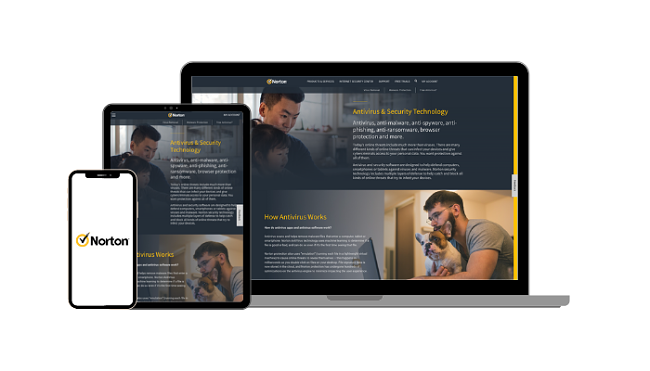
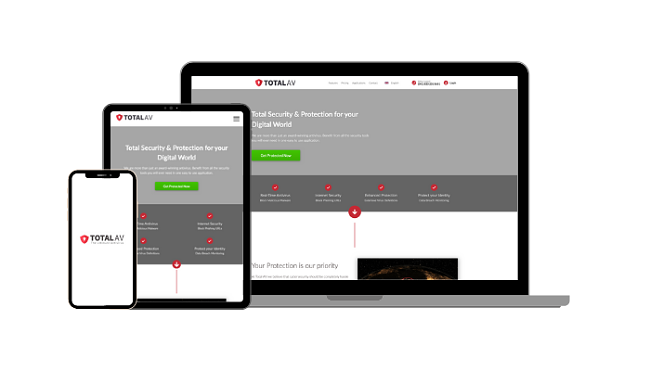
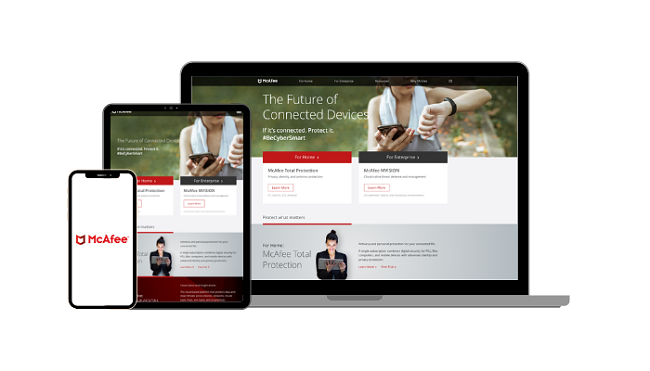



Leave a Comment
Cancel